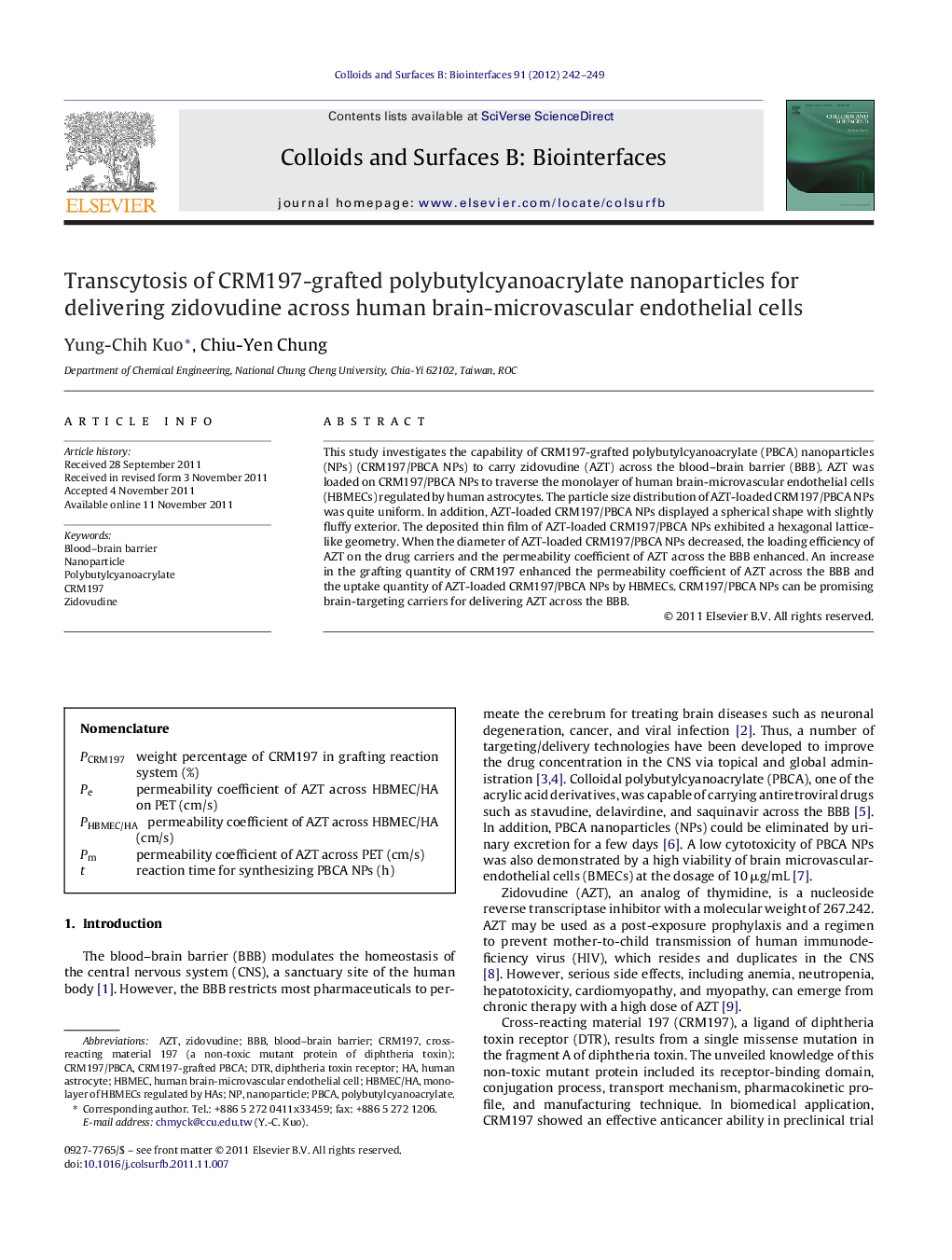| Article ID | Journal | Published Year | Pages | File Type |
|---|---|---|---|---|
| 600813 | Colloids and Surfaces B: Biointerfaces | 2012 | 8 Pages |
This study investigates the capability of CRM197-grafted polybutylcyanoacrylate (PBCA) nanoparticles (NPs) (CRM197/PBCA NPs) to carry zidovudine (AZT) across the blood–brain barrier (BBB). AZT was loaded on CRM197/PBCA NPs to traverse the monolayer of human brain-microvascular endothelial cells (HBMECs) regulated by human astrocytes. The particle size distribution of AZT-loaded CRM197/PBCA NPs was quite uniform. In addition, AZT-loaded CRM197/PBCA NPs displayed a spherical shape with slightly fluffy exterior. The deposited thin film of AZT-loaded CRM197/PBCA NPs exhibited a hexagonal lattice-like geometry. When the diameter of AZT-loaded CRM197/PBCA NPs decreased, the loading efficiency of AZT on the drug carriers and the permeability coefficient of AZT across the BBB enhanced. An increase in the grafting quantity of CRM197 enhanced the permeability coefficient of AZT across the BBB and the uptake quantity of AZT-loaded CRM197/PBCA NPs by HBMECs. CRM197/PBCA NPs can be promising brain-targeting carriers for delivering AZT across the BBB.
Graphical abstractFigure optionsDownload full-size imageDownload as PowerPoint slideHighlights► The deposited film of AZT-loaded CRM197/PBCA NPs exhibits a hexagonal lattice-like geometry. ► Smaller AZT-loaded CRM197/PBCA NPs enhance the loading efficiency of AZT on the drug carriers. ► Smaller AZT-loaded CRM197/PBCA NPs enhance the permeability coefficient of AZT across the BBB. ► A higher grafting quantity of CRM197 enhances the permeability coefficient of AZT across the BBB. ► A higher grafting quantity of CRM197 enhances the uptake of AZT-loaded CRM197/PBCA NPs by HBMECs.
